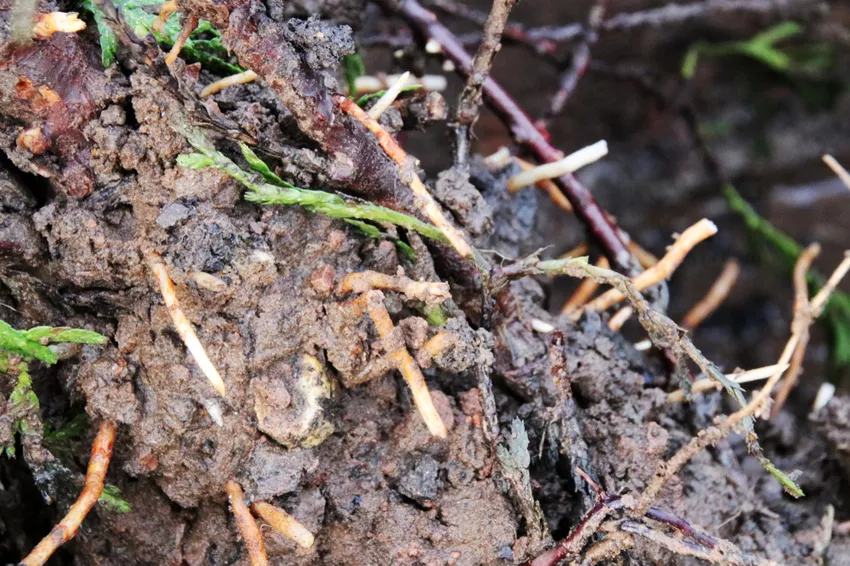- Thuja - shallow roots or deep roots?
- Identify and treat root rot
- Dig up the roots of the thuja
- Allow roots to rot in soil
As long as the tree of life grows healthy and beautifully green in the garden, the roots do not play a major role. It only becomes difficult if you want to transplant a tree of life or clear a thuja hedge. What do you need to know about the roots of thuja?
 The thuja is one of the flat-rooted plants
The thuja is one of the flat-rooted plants
Thuja - shallow roots or deep roots?
Thuja is a shallow root. This means that the rootstock does not dig too deep into the ground. In return, it spreads out laterally and forms many small root shoots. In the hedge, the roots grow into each other, making it difficult to remove the individual trees.
As a shallow rooter, you can plant the tree of life without worrying that the roots will destroy supply lines in the ground. However, over time, the lateral roots can lift patio slabs and sidewalks.
Identify and treat root rot
Although thuja is a robust plant for the hedge, the roots are quite sensitive. They tolerate neither drought nor too much moisture.
If there is waterlogging, there is a risk that root rot will spread. It is triggered by fungal spores and promoted by moisture. The fungal disease is manifested by the fact that the trunk gets whitish spots and the shoots of the thuja dry up.
Root rot is difficult to treat. The thuja usually dies whole. You should then get the roots out of the ground as much as possible and replace the soil.
Dig up the roots of the thuja
Digging up the roots of an older thuja requires some strength and time. If that is too much effort for you, you should hire a specialist company to clear the land.
- Cut back the tree of life down to the remains of the trunk
- excavate earth
- Cut off the ground around Thuja
- Cut lateral roots with scissors or saw
- Pull rootstock out of the ground
First cut the tree of life back to a longer trunk. Then remove the soil down to the roots. Cut the soil all around with the spade and cut or saw off the overhanging roots.
Insert a digging fork as far under the rootstock as possible, lifting it up as you go. With an old thuja, you can use a winch that you tie to the remaining trunk.
Allow roots to rot in soil
If it is too much effort for you to get the roots of the tree of life hedge out of the ground, simply let them rot in the ground.
Cut down the tree of life as much as possible. Drill holes in the roots that are in the ground. Fill in compost or compost starter. Then the roots rot faster.
The site cannot be replanted if you leave the roots in the ground. But you can fill a thick layer of topsoil over it and at least sow lawns.
tips
The roots of the thuja are very sensitive. A tree of life is therefore not so easy to replant - at least when it is older.